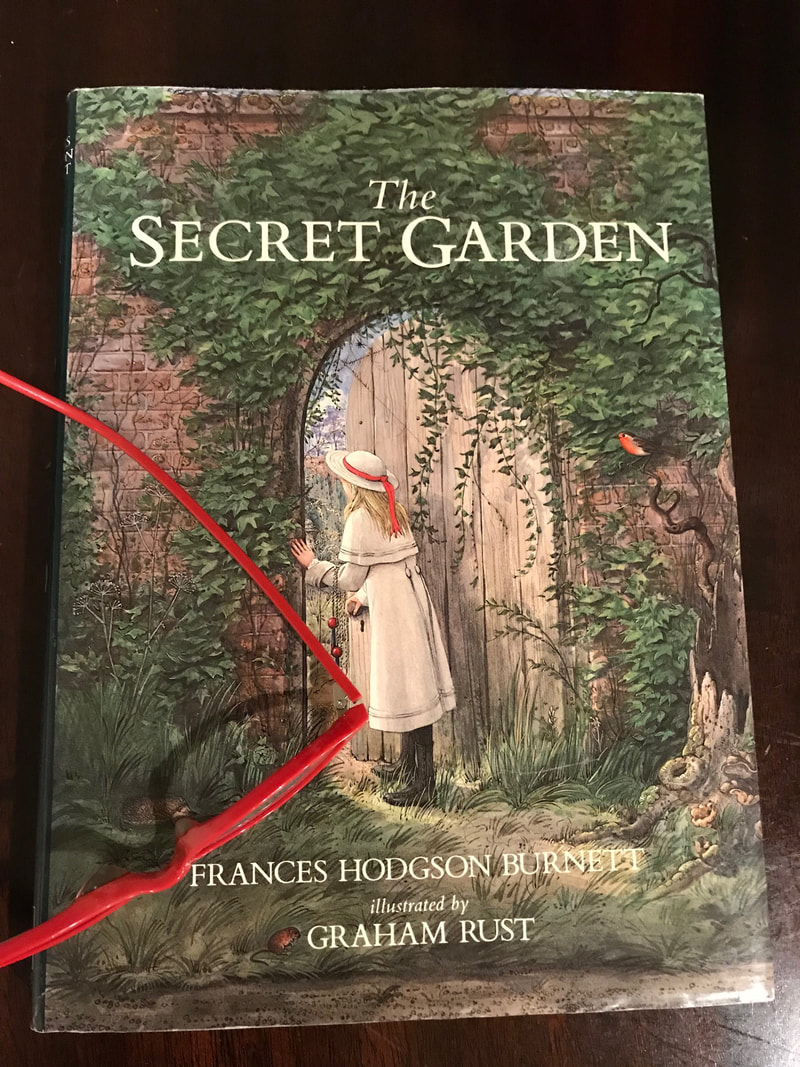Archived Blogs
|
Everyone knows Fred Rogers (aka Mister Rogers).
But after reading about his background and accomplishments, I wanted to know…how did he become the man he was? And then I found a copy of one of his letters listing ten books that influenced him. Here’s the list.
So I’ve been checking them out and now I’m on number #4. You can read my first blog here. The Secret Garden is another children’s book…or is it? The book was written 1910 and released by the chapter in “The American Magazine” —a publication for adults. But since then, its been considered one of the best children’s books of the twentieth century. So I guess you could say it was written for both children and adults. The story is about an orphan, sullen and angry, who arrives at her uncle’s house when her parents die. She makes several discoveries—including a boy who is bedridden and a garden that is locked up. There is a theme, or lesson, and one could argue that it was the psychology of the book that was appealing to Rogers. But he read text books in psychology and had almost daily discussions with a child psychologist, so this simple message was unlikely to be the reason it made the list. The book is beautifully illustrated. Every couple of pages allows you the opportunity to admire either a black and white or colorized etching of the described scene. I found myself captivated by the pictures as much as the story. But I don’t imagine the art work was the reason he picked this book either. The story draws you in slowly. It’s a sweet tale of an angry girl who confronts an equally angry boy and both of them come out all the better for their friendship. The garden deserves a special mention…but more about that later. There’s been other sweet, innocent tales, so I don’t think the actual plot is why he listed this book as number 4. On page 95 I knew, with almost absolute certainty, why Rogers gave such importance to this book. Don’t bother turning to that page, or any of the other 224 pages, to find any particular phrase or description. You have to read the book…and then you will see that this author has the uncanny ability to transport you back to your own childhood. Honestly. And if you are making it your mission to grow children into confident and caring human adults, it helps if you can remember what it was like to be young. I picture him reading this to prepare for the show… to think like a child…to conjure up the pangs of loneliness, the delight of discovery and heart-pounding excitement of childhood shared secrets. I wonder if the book didn’t have another draw to it too. In the book itself, they call it …Magic. It’s Magic that allows the bedridden, crippled boy to walk. I wonder if Rogers sensed there was something real about the Magic. Because there is. And it’s in the garden. In his book Last Child in the Woods, Richard Louv says the lack of nature in our children’s lives is driving the rise in obesity, attention disorders and depression. Over sixty studies have shown the benefit that nature provides to children in reducing stress, promoting social skills and increasing cognitive thinking. As a pediatrician, I’m getting advised by journal articles to start writing prescriptions for play. Before you jump to the conclusion that children get plenty of play time…you better understand the definition we are talking about. Play has been difficult to define. But for the sake of these discussions, it must produce joy, activity and engagement. And lastly, to count as play, it must be directed by the child and not the adult. So soccer practice doesn’t count. One of the most charming parts of the book is the delight the children get from sneaking into the garden…and who wouldn’t… And over walls and earth and trees and swinging sprays and tendrils the fair green veil of tender little leaves had crept and in the grass under the trees and the grey urns in the alcoves and here and there everywhere, were touches or splashes of gold and purple and white and the trees were showing pink and snow above his head, and there were fluttering of wings and faint sweet pipes and humming and scents and scents. And the sun fell warm upon his face like a hand with a lovely touch. It’s an absolutely wonderful book. You should read it. Number 5 in the list is a cookbook! How odd is that? PS. Over a hundred years ago, when this book was written, conditions like depression, migraines and anxiety were treated with bedrest, social isolation and forced feeding. The author of this book, Frances Hodgson Burnett, suffered through more than one hospitalization for the cure. She developed a lifelong distrust of medicine and doctors, preferring instead a mind-body approach that involved spending time outside. You can read about her here.
0 Comments
Leave a Reply. |
Archives
October 2020
Categories |
COPYRIGHT 2017 SUSAN BADARACCO | Site Credits


 RSS Feed
RSS Feed